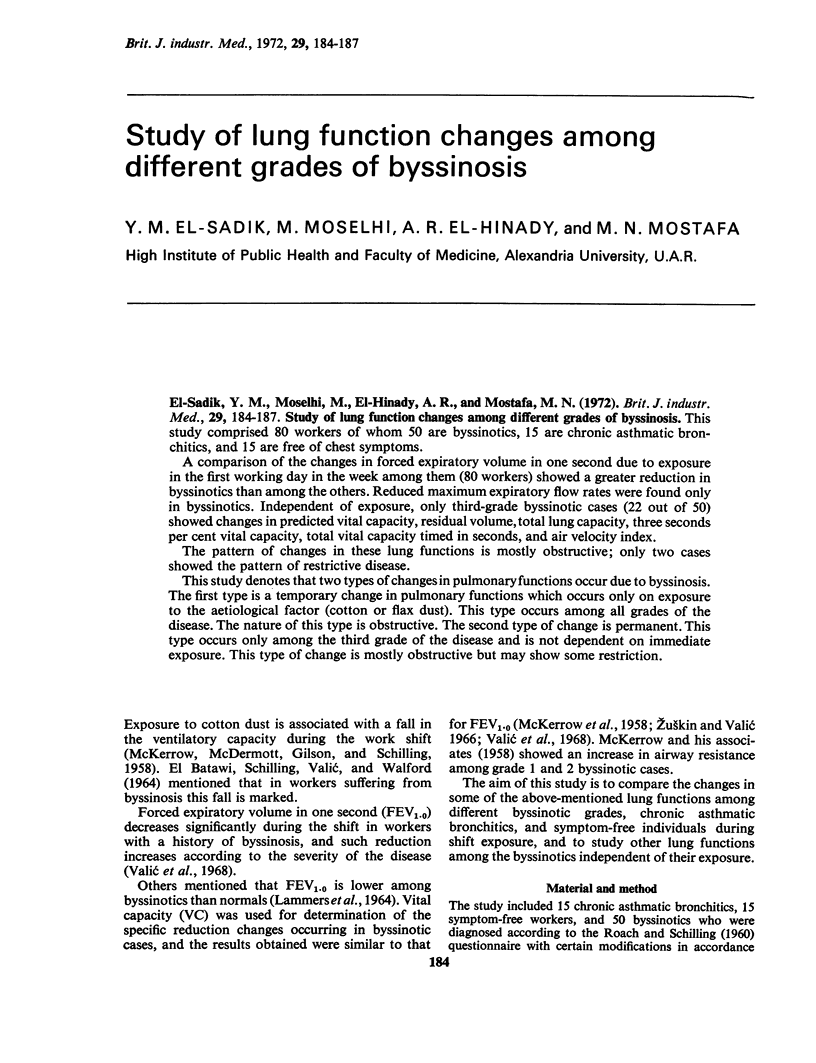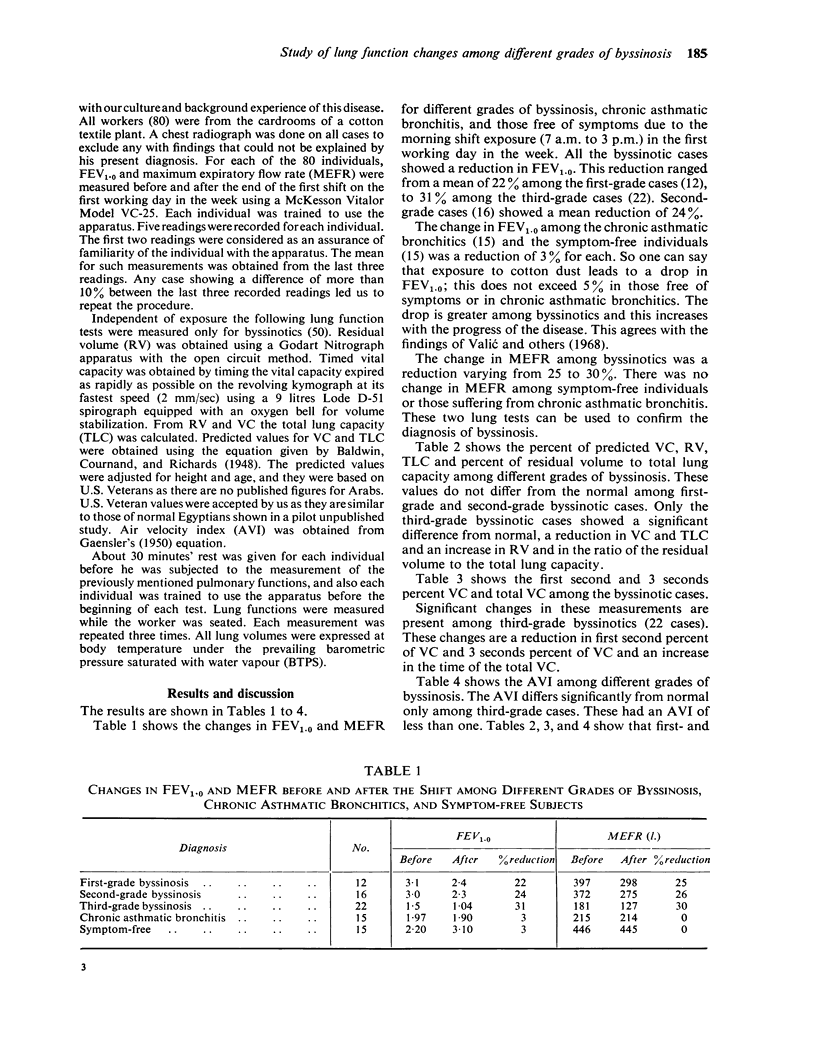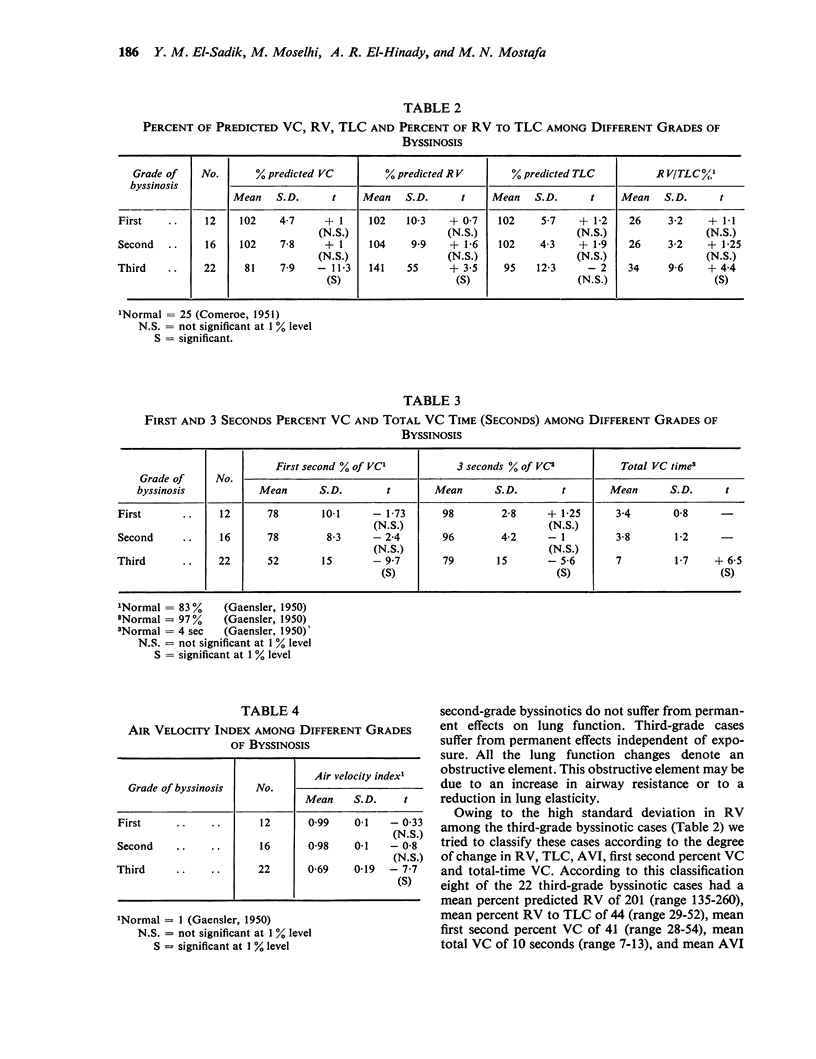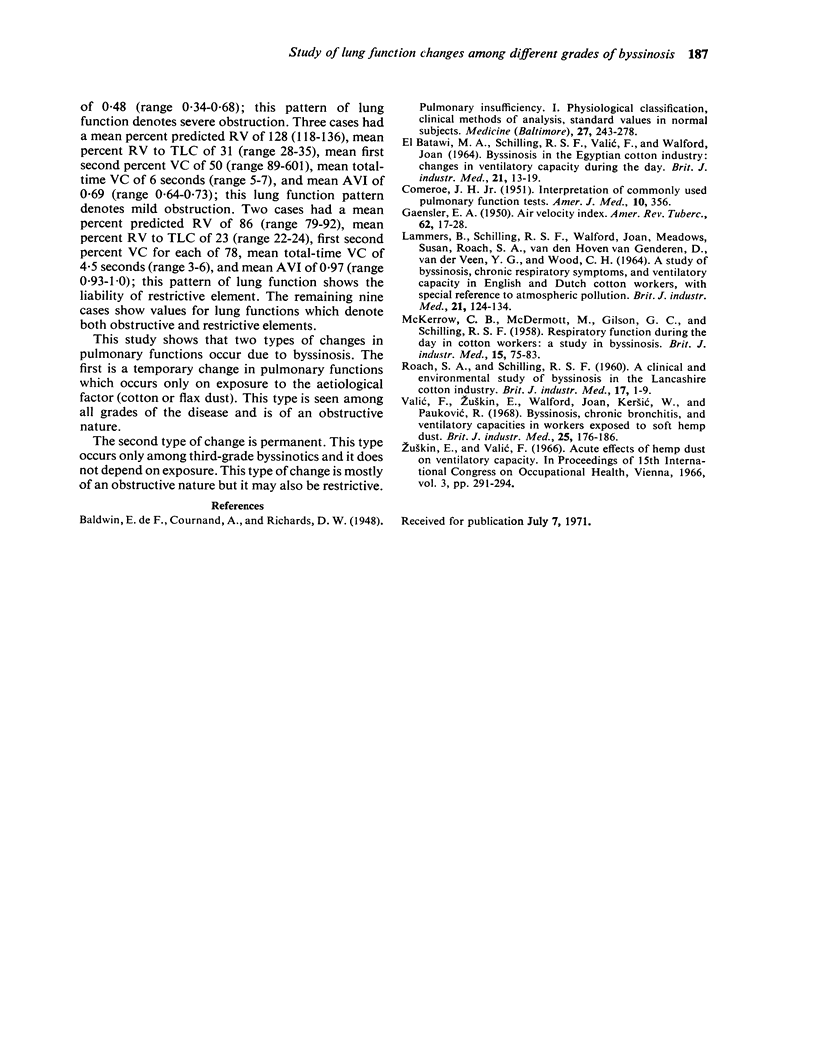Abstract
El-Sadik, Y. M., Moselhi, M., El-Hinady, A. R., and Mostafa, M. N. (1972).Brit. J. industr. Med.,29, 184-187. Study of lung function changes among different grades of byssinosis. This study comprised 80 workers of whom 50 are byssinotics, 15 are chronic asthmatic bronchitics, and 15 are free of chest symptoms.
A comparison of the changes in forced expiratory volume in one second due to exposure in the first working day in the week among them (80 workers) showed a greater reduction in byssinotics than among the others. Reduced maximum expiratory flow rates were found only in byssinotics. Independent of exposure, only third-grade byssinotic cases (22 out of 50) showed changes in predicted vital capacity, residual volume, total lung capacity, three seconds per cent vital capacity, total vital capacity timed in seconds, and air velocity index.
The pattern of changes in these lung functions is mostly obstructive; only two cases showed the pattern of restrictive disease.
This study denotes that two types of changes in pulmonary functions occur due to byssinosis. The first type is a temporary change in pulmonary functions which occurs only on exposure to the aetiological factor (cotton or flax dust). This type occurs among all grades of the disease. The nature of this type is obstructive. The second type of change is permanent. This type occurs only among the third grade of the disease and is not dependent on immediate exposure. This type of change is mostly obstructive but may show some restriction.
Full text
PDF



Selected References
These references are in PubMed. This may not be the complete list of references from this article.
- COMROE J. H., Jr Interpretation of commonly used pulmonary function tests. Am J Med. 1951 Mar;10(3):356–374. doi: 10.1016/0002-9343(51)90279-3. [DOI] [PubMed] [Google Scholar]
- ELBATAWI M. A., SCHILLING R. S., VALIC F., WALFORD J. BYSSINOSIS IN THE EGYPTIAN COTTON INDUSTRY: CHANGES IN VENTILATORY CAPACITY DURING THE DAY. Br J Ind Med. 1964 Jan;21:13–19. doi: 10.1136/oem.21.1.13. [DOI] [PMC free article] [PubMed] [Google Scholar]
- GAENSLER E. A. Air velocity index; a numerical expression of the functionally effective portion of ventilation. Am Rev Tuberc. 1950 Jul;62(1-A):17–28. doi: 10.1164/art.1950.62.1-1.17. [DOI] [PubMed] [Google Scholar]
- LAMMERS B., SCHILLING R. S., WALFORD J., MEADOWS S., ROACH S. A., VAN DEN HOVEN D., VAN DEN VEEN Y. G., WOOD C. H. A STUDY OF BYSSINOSIS, CHRONIC RESPIRATORY SYMPTOMS, AND VENTILATORY CAPACITY IN ENGLISH AND DUTCH COTTON WORKERS, WITH SPECIAL REFERENCE TO ATMOSPHERIC POLLUTION. Br J Ind Med. 1964 Apr;21:124–134. doi: 10.1136/oem.21.2.124. [DOI] [PMC free article] [PubMed] [Google Scholar]
- McKERROW C. B., McDERMOTT M., GILSON J. C., SCHILLING R. S. Respiratory function during the day in cotton workers: a study in byssinosis. Br J Ind Med. 1958 Apr;15(2):75–83. doi: 10.1136/oem.15.2.75. [DOI] [PMC free article] [PubMed] [Google Scholar]
- ROACH S. A., SCHILLING R. S. A clinical and environmental study of byssinosis in the Lancashire cotton industry. Br J Ind Med. 1960 Jan;17:1–9. doi: 10.1136/oem.17.1.1. [DOI] [PMC free article] [PubMed] [Google Scholar]


